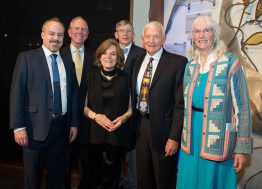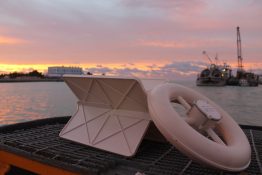The University of Washington joins 12 other leading North American research universities in the new University Climate Change Coalition, or UC3, a group committed to leveraging its research and resources to help communities accelerate climate action. The coalition, which launched Feb. 6, includes universities that have committed to mobilize their resources and expertise to accelerate local and regional climate action in partnership with businesses, cities and states.
Read more at UW Today »UW’s large research vessel, R/V Thomas G. Thompson, gets back to work
After a stem to stern makeover, R/V Thompson is ready to get back to work exploring the world’s oceans.
Read more at UW Today »Friday Harbor Labs’ Megan Dethier receives Seattle Aquarium Conservation Research Award
Each year, the Seattle Aquarium recognizes individuals who are leaders in marine research, especially in the Pacific Northwest. This year that honor goes to Megan Dethier, a longtime researcher at the College of the Environment’s Friday Harbor Laboratories. She was recognized alongside George Willoughby from Friday Habor Labs’ Advancement Board, who received the Scott S. Patrick Award for his volunteer service.
Read more »A new 'atmospheric disequilibrium' could help detect life on other planets
As NASA’s James Webb Space Telescope and other new giant telescopes come online they will need novel strategies to look for evidence of life on other planets. A University of Washington study has found a simple approach to look for life that might be more promising than just looking for oxygen. The paper, published Jan. 24 in Science Advances, offers a new recipe for providing evidence that a distant planet harbors life.
Read more at UW Today »Temporary 'bathtub drains' in the ocean concentrate marine debris
An experiment featuring the largest flotilla of sensors ever deployed in a single area provides new insights into how marine debris, or flotsam, moves on the surface of the ocean. Conducted in the Gulf of Mexico near the site of the Deepwater Horizon oil spill, the experiment placed hundreds of drifting sensors to observe how material moves on the ocean’s surface.
Read more at UW Today »





